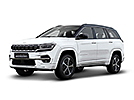మహీంద్రా స్కార్పియో [2014-2017] ఎస్4 ప్లస్ 1.99 ఇంటెల్లి-హైబ్రిడ్
- స్కార్పియో [2014-2017]
- Specs & Features
- వేరియంట్లు
- కలర్స్
![మహీంద్రా స్కార్పియో [2014-2017] ఎస్4 ప్లస్ 1.99 ఇంటెల్లి-హైబ్రిడ్ మహీంద్రా స్కార్పియో [2014-2017] ఎస్4 ప్లస్ 1.99 ఇంటెల్లి-హైబ్రిడ్](https://imgd.aeplcdn.com/664x374/cw/specialVersions/5321.jpg?v=20170602062406&q=40)
![మహీంద్రా స్కార్పియో [2014-2017] కుడి వైపు నుంచి ముందుభాగం మహీంద్రా స్కార్పియో [2014-2017] కుడి వైపు నుంచి ముందుభాగం](https://imgd.aeplcdn.com/664x374/ec/19/43/14236/img/m/Mahindra-Scorpio-Right-Front-Three-Quarter-30696_ol.jpg?v=201711021421&q=80)
![మహీంద్రా స్కార్పియో [2014-2017] కుడి వైపు నుంచి ముందుభాగం మహీంద్రా స్కార్పియో [2014-2017] కుడి వైపు నుంచి ముందుభాగం](https://imgd.aeplcdn.com/664x374/ec/19/43/14236/img/ol/Mahindra-Scorpio-Right-Front-Three-Quarter-30701.jpg?v=201711021421&q=80)
![మహీంద్రా స్కార్పియో [2014-2017] కుడి వైపు నుంచి ముందుభాగం మహీంద్రా స్కార్పియో [2014-2017] కుడి వైపు నుంచి ముందుభాగం](https://imgd.aeplcdn.com/664x374/ec/19/43/14236/img/ol/Mahindra-Scorpio-Right-Front-Three-Quarter-31907.jpg?v=201711021421&q=80)
![మహీంద్రా స్కార్పియో [2014-2017] కుడి వైపు నుంచి వెనుక భాగం మహీంద్రా స్కార్పియో [2014-2017] కుడి వైపు నుంచి వెనుక భాగం](https://imgd.aeplcdn.com/664x374/ec/19/43/14236/img/ol/Mahindra-Scorpio-Right-Rear-Three-Quarter-31908.jpg?v=201711021421&q=80)
![మహీంద్రా స్కార్పియో [2014-2017] వెనుక వైపు నుంచి మహీంద్రా స్కార్పియో [2014-2017] వెనుక వైపు నుంచి](https://imgd.aeplcdn.com/664x374/ec/19/43/14236/img/ol/Mahindra-Scorpio-Rear-view-30699.jpg?v=201711021421&q=80)
![మహీంద్రా స్కార్పియో [2014-2017] వెనుక వైపు నుంచి మహీంద్రా స్కార్పియో [2014-2017] వెనుక వైపు నుంచి](https://imgd.aeplcdn.com/664x374/ec/19/43/14236/img/ol/Mahindra-Scorpio-Rear-view-31915.jpg?v=201711021421&q=80)
![మహీంద్రా స్కార్పియో [2014-2017] ఎడమ వైపు నుంచి ముందుభాగం మహీంద్రా స్కార్పియో [2014-2017] ఎడమ వైపు నుంచి ముందుభాగం](https://imgd.aeplcdn.com/664x374/ec/19/43/14236/img/ol/Mahindra-Scorpio-left-rear-three-quarter-30697.jpg?v=201711021421&q=80)
వేరియంట్
స్పెసిఫికేషన్స్ & ఫీచర్స్
- స్పెసిఫికేషన్స్
- ఫీచర్లు
- స్పెసిఫికేషన్స్
- ఫీచర్లు
స్పెసిఫికేషన్స్
ఇంజిన్ & ట్రాన్స్మిషన్
- ఇంజిన్1997 cc, 4 సిలిండర్స్ ఇన్లైన్, 4 వాల్వ్స్/సిలిండర్, డీఓహెచ్సీ
సమయానుకూల సేవలు మోటార్ ను సమర్థవంతంగా మరియు అత్యుత్తమ ఆకృతిలో ఉంచుతాయి.
- ఇంజిన్ టైప్ఇంటెల్లి-హైబ్రిడ్
ఇంజిన్ పేరు, స్థానభ్రంశం మరియు సిలిండెర్స్ సంఖ్య పరంగా తయారీదారు ఇచ్చిన అధికారిక శీర్షిక.
ఒక పెర్ఫార్మెన్స్-ఓరియెంటెడ్ ఇంజిన్ మరియు ఒక పెద్ద డిస్ప్లేసెమెంట్ కంటె చాల ఎక్కువ ఫోర్-సిలిండర్స్ జేనరలీ ఇండికేట్ లభిస్తుంది.
- ఫ్యూయల్ టైప్డీజిల్
భారతదేశంలోని అన్ని కార్స్ పెట్రోల్, డీజిల్, సిఎన్జి, ఎల్పీజీ లేదా విద్యుత్ శక్తితో నడుస్తాయి.
- మాక్స్ పవర్ (bhp@rpm)120 bhp @ 4000 rpm
పూర్తి థ్రస్ట్ కింద వాహనం యొక్క పెర్ఫార్మెన్స్ గురించి మంచి అభిప్రాయము ఇస్తుంది. ఇక్కడ ఎక్కువ ఫిగర్ అంటే సాధారణంగా అధిక వేగాన్ని కూడా సూచిస్తుంది.
అధిక శక్తివంతమేనా, పెప్పియర్ ఇంజిన్ అయితే ఇది ఇంధన ఆర్థిక వ్యవస్థను కూడా ప్రభావితం చేస్తుంది.
- గరిష్ట టార్క్ (nm@rpm)280 nm @ 1800 rpm
ఇన్-గేర్ త్వరణానికి సంబంధించినది. ఇక్కడ అధిక సంఖ్య అంటే మెరుగైన రోల్-ఆన్ యాక్సిలరేషన్, తక్కువ గేర్ షిఫ్ట్లు మరియు బహుశా మెరుగైన ఇంధన సామర్థ్యం.
తక్కువ rpm రెంజ్ వద్ద ఎక్కువ టార్క్ ఇంజిన్ను మరింత ప్రతిస్పందించేలా చేస్తుంది. ఇది చాలా గేర్ మార్పులు లేకుండా ఇంజిన్ సజావుగా నడపడానికి అనుమతిస్తుంది.
- మైలేజి (అరై)15.4 కెఎంపిఎల్
ఇది ఒక ఇంజిన్ ఇచ్చే గరిష్ట ఇంధన సామర్థ్యం. arai (ఆటోమోటివ్ రీసెర్చ్ అసోసియేషన్ ఆఫ్ ఇండియా) ప్రమాణాల ద్వారా నిర్వహించబడిన మరియు నిర్దేశించిన పరీక్షల ఆధారంగా తయారీదారుచే అన్ని సంఖ్యలు అందించబడతాయి.
ప్రత్యేక పరిస్థితుల్లో డ్రైవింగ్ చేస్తున్నప్పుడు ఫ్యూయల్ పొందే సామర్థ్యం రియల్-వరల్డ్ పరిస్థితులలో పొందే అవకాశం ఉండదు
- డ్రివెట్రిన్ఆర్డబ్ల్యూడి
కార్స్ సెగ్మెంట్ ఆధారంగా విభిన్న డ్రైవ్ట్రెయిన్ కాన్ఫిగరేషన్లతో వస్తాయి.
ముందు-వీల్ డ్రైవ్ (ఎఫ్డబ్ల్యూడి) ప్రధాన స్రవంతి కార్స్ సర్వసాధారణం అయితే ఖరీదైన కార్స్ లేదా suvస్ వెనుక చక్రాల డ్రైవ్ (ఆర్డబ్ల్యూడి) లేదా ఆల్-వీల్ డ్రైవ్ (ఎడబ్ల్యూడి)తో వస్తాయి.
- ట్రాన్స్మిషన్మాన్యువల్ - 5 గేర్స్
ఇంజిన్ నుండి చక్రాలకు శక్తిని ట్రాన్సఫర్ చేయడానికి ఉపయోగించే ట్రాన్స్మిషన్ టైప్
మాన్యువల్ ఆపరేటెడ్ ట్రాన్స్మిషన్ ప్రాముఖ్యంగా, ఇది సరళత మరియు తక్కువ ఖర్చు. వేర్యాడ్ టేప్స్ ఆటోమేటిక్ ట్రాన్స్మిషన్స్ కూడా అందుబాటులో ఉన్నాయి.
- ట్యూర్బోచార్జర్ /సూపర్ చార్జర్టర్బోచార్జ్డ్
తయారీదారులు నేడు టర్బోచార్జర్లను దాని ఇంధన ఆర్థిక వ్యవస్థను ప్రభావితం చేయకుండా ఇంజిన్ శక్తిని పెంచడానికి అందిస్తున్నారు. సూపర్చార్జర్లు ఖరీదైన కార్స్ లో కనిపిస్తాయి కానీ ప్రతికూలంగా, అవి చాలా సమర్థవంతంగా లేవు.
టర్బోచార్జర్లు మరింత ప్రభావవంతంగా ఉంటాయి కానీ చాలా ఉష్ణ నిర్వహణ అవసరం. సూపర్చార్జర్లు, అదే సమయంలో, పవర్లో లీనియర్ బంప్ను అందిస్తాయి కానీ అవి తులనాత్మకంగా చాలా క్లిష్టంగా ఉంటాయి.
డైమెన్షన్స్ & వెయిట్
- పొడవు4456 mm
కార్ పొడవు దాని విభాగాన్ని నిర్ణయిస్తుంది. భారతదేశంలో, 4 మేటర్స్ కంటే తక్కువ పొడవు ఉన్న కార్స్ తగ్గిన ఎక్సైజ్ ఆధిక్యత అనుభవిస్తాయి.
- పొడవు: 4456
ఎక్కువ పొడవు ఉన్నట్లయితే దానికి ఫలితంగా ఎక్కువ క్యాబిన్ స్పేస్ ఉంటుంది. దాంతో పాటు ఇది స్ట్రెయిట్ లైన్ స్టెబిలిటీని కూడా అందిస్తుంది.
- వెడల్పు1820 mm
కారు యొక్క వెడల్ప్ దాని మిర్రర్ లేకుండా దాని విడెస్ట్ పాయింట్ గా నిర్వచించబడింది.
- వెడల్పు: 1820
మరింత వెడల్పు మీకు క్యాబిన్ లోపల ఎక్కువ పార్శ్వ స్థలాన్ని ఇచ్చినప్పటికీ, ఇరుకైన ప్రదేశాలలో కారును పార్క్ చేయడం మరింత కష్టతరం చేస్తుంది.
- హైట్1995 mm
కారు యొక్క ఎత్తు, వాహనం యొక్క అత్యధిక స్థానం సూచిస్తుంది.
- హైట్: 1995
కారు పొడవుగా ఉంటే, క్యాబిన్ లోపల మరింత హెడ్రూమ్ ఆఫర్లో ఉంది. అయితే, ఒక పొడవాటి బాలుడి వైఖరి కారు యొక్క గురుత్వాకర్షణ కేంద్రాన్ని కూడా ప్రభావితం చేస్తుంది, ఇది మరింత బాడీ రోల్కు కారణమవుతుంది.
- వీల్ బేస్2680 mm
ముందు మరియు వెనుక వెనుక చక్రాల మధ్య ఖాళీ.
- వీల్ బేస్ : 2680
వీల్బేస్ ఎంత పొడవుగా ఉంటే, క్యాబిన్ లోపల ఎక్కువ స్థలం ఉంటుంది.
- గ్రౌండ్ క్లియరెన్స్180 mm
ఇది కారు యొక్క అత్యల్ప స్థానం మరియు భూమి మధ్య ఖాళీ.
- గ్రౌండ్ క్లియరెన్స్ : 180
కారు మంచి మొత్తంలో క్లియరెన్స్ కలిగి ఉంటే, పెద్ద స్పీడ్ బ్రేకర్లను క్లియర్ చేయడం మరియు మొత్తంగా చెడు రోడ్లను ఎదుర్కోవడం సులభం అవుతుంది.
కెపాసిటీ
- డోర్స్5 డోర్స్
తలుపుల సంఖ్య కారు వర్గాన్ని నిర్వచిస్తుంది. ఉదాహరణకు - ఫోర్ డోర్ అంటే సెడాన్, టూ-డోర్ అంటే కూపే అయితే 5-డోర్ సాధారణంగా హ్యాచ్బ్యాక్, ఎంపీవీ లేదా ఎస్యూవీని సూచిస్తాయి.
- డోర్స్: 5
- సీటింగ్ కెపాసిటీ7 & 9 పర్సన్
కారులో సౌకర్యవంతంగా కూర్చోగలిగే వ్యక్తుల సంఖ్యను బట్టి ఇది కార్ల తయారీదారుని ద్వారా నిర్దేశించబడింది.
- వరుసల సంఖ్య3 రౌస్
చిన్న కార్స్ సాధారణంగా ఐదుగురు కూర్చునే రెండు వరుసలు ఉంటాయి, అయితే కొన్ని ఎస్యూవీలు మరియు ఎంపీవీలు మూడు వరుసలను కలిగి ఉంటాయి మరియు 7-8 మంది ప్రయాణికులు కూర్చునే అవకాశం ఉంటుంది.
- ఫ్యూయల్ ట్యాంక్ కెపాసిటీ60 లీటర్స్
కారు యొక్క ఇంధన ట్యాంక్ యొక్క అధికారిక వాల్యూమ్, సాధారణంగా లీటర్స్ లో సూచించబడుతుంది.
కారులో పెద్ద ఫ్యూయల్ ట్యాంక్ ఉంటే, అది ఇంధనం నింపకుండా చాలా దూరం ప్రయాణించగలదు.
సస్పెన్షన్స్, బ్రేక్స్,స్టీరింగ్ &టైర్స్
- ఫ్రంట్ సస్పెన్షన్కాయిల్ స్ప్రింగ్ & యాంటీ రోల్ బార్తో ఇండిపెండెంట్ గా ఉంటుంది
భారతదేశంలోని దాదాపు అన్ని కార్స్ ఇండిపెండెంట్ ఫ్రంట్ సస్పెన్షన్ను ఉపయోగిస్తాయి, ఇది సాధారణంగా మాక్ఫెర్సన్ స్ట్రట్ టైప్.
- రియర్ సస్పెన్షన్ములిట్-లింక్ కాయిల్ స్ప్రింగ్
రియర్ సస్పెన్షన్ నాన్ఇండిపెండెంట్ లేదా ఇండిపెండెంట్ ఉండవచ్చు.
అధిక బడ్జెట్ కార్స్ నాన్-ఇండిపెండెంట్ సస్పెన్షన్ను కలిగి ఉంటాయి, అయితే ఖరీదైనవి ఇండిపెండెంట్ వెనుక సస్పెన్షన్ను పొందుతాయి, ఇది మెరుగైన బంప్ శోషణను అందిస్తుంది.
- ఫ్రంట్ బ్రేక్ టైప్డిస్క్
భారతదేశంలో విక్రయించబడే చాలా వాహనాలు వెంటిలేటెడ్ లేదా నాన్-వెంటిలేటెడ్ డిస్క్ బ్రేక్లను ముందుగా పొందుతాయి.
వెంటిలేటెడ్ డిస్క్లు మంచి స్టాపింగ్ పవర్ని అందించడంతో పాపులర్ అవ్వడమే కాక, బాగా వేడిగా ఉన్నప్పుడు కూడా ఇవి బాగా పనిచేస్తాయి.
- రియర్ బ్రేక్ టైప్డ్రమ్
సరసమైన కార్స్ లో, డ్రమ్స్ బ్రేక్స్ వెనుక భాగంలో అమర్చబడి ఉంటాయి, ఎందుకంటే అవి ఖర్చుతో కూడుకున్నవి.
వాస్తవ ప్రపంచంలో కార్స్ వేగంగాపెరుగుతున్నందున వెనుకవైపు డిస్క్ సెటప్ ఇప్పుడు మరింత ప్రజాదరణ పొందుతోంది.
- మినిమం టర్నింగ్ రాడిస్5.4 మెట్రెస్
180-డిగ్రీల మలుపును పూర్తి చేయడానికి కారు తీసుకునే అధికారిక కెర్బ్-టు-కెర్బ్ కనీస వ్యాసార్థం.
టర్నింగ్ వ్యాసార్థం తక్కువగా ఉంటే, మీరు బిగుతుగా మలుపు లేదా యు-టర్న్ తీసుకోవడానికి తక్కువ స్థలం అవసరం.
- స్టీరింగ్ టైప్పవర్ అసిస్టెడ్ (హైడ్రాలిక్)
నేడు కార్స్ దాదాపు అన్ని స్టీరింగ్ సిస్టమ్లు తక్కువ వేగంతో వాటిని మెరుగ్గా పార్క్ చేయడంలో సహాయపడతాయి - ఇవి హైడ్రాలిక్, ఎలక్ట్రో-హైడ్రాలిక్ లేదా ఎలక్ట్రిక్ కావచ్చు.
- వీల్స్స్టీల్ రిమ్స్
కార్స్ పై ఉపయోగించే చక్రాలు ప్లాస్టిక్ వీల్ కవర్ హబ్తో కూడిన స్టీల్ రిమ్లు లేదా అధిక స్పెక్ మోడల్లలో అల్లోయ్ వీల్స్ లేదా ఖరీదైన కార్స్.
రేజర్ కట్, లేదా డైమండ్ కట్ అల్లోయ్ వీల్ డిజైన్ మరింత ప్రజాదరణ పొందడం లేదు. తయారీదారులు సాధారణంగా తమ కార్ మోడళ్ల యొక్క టాప్-ఎండ్ ట్రిమ్లో వీటిని అందిస్తారు.
- స్పేర్ వీల్స్టీల్
వివిధ రకాలైన రోడ్ల నాణ్యత కలిగిన దేశంలో ముఖ్యమైనది, ప్రధాన టైర్లలో ఒకటి పాడైపోయినప్పుడు స్పేర్ వీల్స్ ఒకరు చిక్కుకుపోకుండా చూస్తాయి.
బూట్ స్పేస్లో ఆదా చేయడానికి ప్రీమియం కార్ మోడల్లలో స్పేస్ సేవర్లను (స్టాక్ వీల్స్ కంటే చిన్నవి) కలిగి ఉంటాయి.
- ఫ్రంట్ టైర్స్235 / 65 r17
ముందు చక్రాలకు సరిపోయే రబ్బరు టైర్ యొక్క ప్రొఫైల్/డైమెన్షన్.
- రియర్ టైర్స్235 / 65 r17
వెనుక చక్రాలకు సరిపోయే రబ్బరు టైర్ యొక్క ప్రొఫైల్/డైమెన్షన్.
ఫీచర్లు
సేఫ్టీ
- సీట్ బెల్ట్ వార్నింగ్అవును
భారతదేశంలో విక్రయించే కార్స్ తప్పనిసరి ఫిట్మెంట్, ప్రయాణికులు తమ సీటు బెల్ట్లు ధరించలేదని గుర్తించినప్పుడు బిగ్గరగా బీప్లను విడుదల చేస్తుంది.
సీట్ బెల్ట్ హెచ్చరిక ముందు-సీటులో కూర్చునేవారికి తప్పనిసరి, అయితే అందరు సీటు బెల్ట్లు ధరించాలని సిఫార్సు చేయబడింది.
బ్రేకింగ్ & ట్రాక్షన్
- యాంటీ -లాక్ బ్రేకింగ్ సిస్టమ్ (abs)అవును
బ్రేక్స్ లను పల్సింగ్ చేయడం ద్వారా అత్యవసర బ్రేకింగ్ పరిస్థితులలో టైర్లను లాక్ చేయకుండా మరియు స్కిడ్డింగ్ చేయకుండా నిరోధించే ఎలక్ట్రానిక్ సిస్టమ్ (త్వరగా బ్రేక్లను విడుదల చేయడం మరియు మళ్లీ వర్తింపజేయడం)
abs అనేది ఒక గొప్ప ప్రమాద నిరోధక సాంకేతికత, ఇది గట్టిగా బ్రేకింగ్ చేస్తున్నప్పుడు డ్రైవర్లను స్టీరింగ్ చేయడానికి అనుమతిస్తుంది
- ఎలక్ట్రానిక్ బ్రేక్-ఫోర్స్ డిస్ట్రిబ్యూషణ్ (ebd)అవును
కారును వీలైనంత త్వరగా మరియు స్థిరంగా ఆపడానికి నాలుగు బ్రేక్ల మధ్య బ్రేకింగ్ శక్తులను దారి మళ్లించే ఎలక్ట్రానిక్ సిస్టమ్
లాక్స్ & సెక్యూరిటీ
- ఇంజిన్ ఇన్ మొబిలైజర్అవును
కీ ఉంటే తప్ప ఇంజిన్ స్టార్ట్ కాకుండా నిరోధించే భద్రతా పరికరం
- సెంట్రల్ లాకింగ్కీ తో
ఈ ఫీచర్ ద్వారా అన్నీ డోర్స్ రిమోట్ లేదా కీతో ఒకేసారి అన్ లాక్ చేయవచ్చు
- చైల్డ్ సేఫ్టీ లాక్అవును
వెనుక సీటులో ఉన్నవారు డోర్స్ తెరవకుండా ఆపడానికి ఇటువంటి తాళాలు వెనుక డోర్స్ వద్ద ఏర్పాటు చేయబడ్డాయి
కంఫర్ట్ & కన్వీనియన్స్
- ఎయిర్ కండీషనర్అవును (మాన్యువల్)
క్యాబిన్ను చల్లబరచడానికి ఉపయోగించే వివిధ రకాల ఎయిర్ కండిషనింగ్ సిస్టమ్స్
తక్కువ ఉష్ణోగ్రతను నిర్వహించడం మరియు మొదటి బ్లోర్ స్పీడ్ ఉత్తమ ఫలితాలను అందిస్తుంది
- హీటర్అవును
ఈ ఫీచర్ క్యాబిన్ను వేడి చేయడానికి ఎయిర్-కాన్ వెంట్ల ద్వారా వెచ్చని గాలిని వెళ్లేలా చేస్తుంది
- వ్యతిరేక కాంతి అద్దాలుమాన్యువల్ - ఇంటెర్నెల్ మాత్రమే
ఈ అద్దాలు మీ వెనుక ఉన్న కార్స్ హెడ్లైట్ కిరణాల నుండి కాంతిని నిరాకరిస్తాయి
పెద్ద సంఖ్యలో ప్రజలు తమ హై బీమ్లో డ్రైవింగ్ చేయడానికి ఇష్టపడతారు కాబట్టి, ఈ అద్దాలు ఉపయోగపడతాయి
- స్టీరింగ్ అడ్జస్ట్ మెంట్టిల్ట్
డ్రైవర్ యొక్క అవసరానికి అనుగుణంగా స్టీరింగ్ వీల్ పైకి/క్రిందికి, లోపలికి/బయటకు కదులుతుంది
రేక్ మరియు రీచ్ అడ్జస్ట్ మెంట్ రెండూ చేర్చబడినప్పుడు, అది టైలర్మేడ్ డ్రైవింగ్ పోజిషన్ కోసం మార్పులు చేస్తుంది
- 12v పవర్ ఔట్లెట్స్2
ఈ సాకెట్ సిగరెట్ లైటర్ స్టైల్ 12 వోల్ట్ ప్లగ్కి కరెంట్ని అందిస్తుంది
ఇది స్మార్ట్ఫోన్లు, టాబ్లెట్లు, ల్యాప్టాప్లు, రీఛార్జ్ చేయగల బ్యాటరీలు మరియు ఇతర USB ఛార్జర్లను ఛార్జ్ చేయడంలో సహాయపడుతుంది. ఇది టైర్లను పెంచే కంప్రెసర్కి మరియు వినయపూర్వకమైన సిగరెట్ లైటర్కు కూడా శక్తినిస్తుంది!
సీట్స్ & సీట్ పై కవర్లు
- సీట్ అప్హోల్స్టరీఫాబ్రిక్
రీప్లేస్ చేయడానికి సమయం వచ్చినప్పుడు, టచ్ కు సహజమైన చల్లగా ఉండే ఒక వస్త్రాన్ని ఉపయోగించండి
- రియర్ ప్యాసెంజర్ సీట్ టైప్బెంచ్
- మూడవ వరుస సీటు టైప్జంప్ సీట్స్
ఈ వరుస బెంచ్ లేదా ఒక జత జంప్/కెప్టెన్ సీట్స్ కావచ్చు
అవసరం వచ్చినప్పుడు, చివరి వరుస సామాను కోసం స్థలంగా రెట్టింపు అవుతుంది.
- ఇంటీరియర్స్డ్యూయల్ టోన్
క్యాబిన్ సింగిల్ లేదా డ్యూయల్-టోన్ కలర్ స్కీమ్తో వస్తుందో లేదో వర్ణిస్తుంది
- ఇంటీరియర్ కలర్గ్రే అండ్ బ్లాక్
క్యాబిన్ లోపల ఉపయోగించే వివిధ రంగుల షేడ్స్
- స్ప్లిట్ రియర్ సీట్60:40 స్ప్లిట్
వెనుక సీట్ యొక్క విభాగాలు విడిగా ముడుచుకునే సామర్థ్యాన్ని కలిగి ఉంటాయి
అవసరమైనప్పుడు బూట్ స్పేస్ పెరుగుతుంది కాబట్టి ఈ ఫంక్షన్ ప్రాక్టికాలిటీని పెంచుతుంది.
- ఫ్రంట్ సిట్ బ్యాక్ పాకెట్స్అవును
ముందు సీట్స్ వెనుక ఉన్న పాకెట్స్ వెనుక సీటులో ఉన్నవారు తమ వస్తువులను నిల్వ చేసుకోవడానికి సహాయపడతాయి
- హెడ్ రెస్ట్స్ఫ్రంట్ & రియర్
తలకు మద్దతిచ్చే సీటు నుండి లేదా స్థిరంగా విస్తరించి ఉన్న భాగం
స్టోరేజ్
- కప్ హోల్డర్స్ముందు మాత్రమే
డోర్స్, విండోస్, మిర్రర్స్ & వైపర్స్
- orvm కలర్బాడీ కావురెడ్
వాహనం వెనుకవైపు చూడడానికి డ్రైవర్కు సహాయం చేయడానికి కారు వెలుపలి భాగంలో, తలుపు చుట్టూ ఉంచిన అద్దాలు.
orvmsపై వైడ్ యాంగిల్ మిర్రర్లను ఉంచడం/స్టిక్ చేయడం చేస్తే రియర్ వ్యూ అద్భుతంగా కనిపిస్తుంది.
- పవర్ విండోస్ముందు మాత్రమే
బటన్/స్విచ్ను నొక్కడం ద్వారా కారు కిటికీలు పైకి/కిందకి దించవచ్చు
పవర్ విండో ఎలక్ట్రానిక్స్ జామ్ అయిన ఎమెర్జెనీస్ పరిస్థితుల్లో, విండ్స్క్రీన్ని కిచ్కింగ్ ద్వారా వాహనం నుండి నిష్క్రమించండి
- అడ్జస్టబుల్ orvmsఎక్సటెర్నేలీ అడ్జస్టబుల్
డ్రైవర్ యొక్క అవసరానికి అనుగుణంగా డోర్ మిర్రర్ను సర్దుబాటు చేయడానికి వివిధ మార్గాలు
వివిధ కఠినమైన పరిస్థితులలో తీర్పును నడపడంలో అద్భుతంగా సహాయపడుతుంది.
- ఎక్స్టీరియర్ డోర్ హేండిల్స్బాడీ కావురెడ్
- ఇంటీరియర్ డోర్ హ్యాండిల్స్పెయింటెడ్
- డోర్ పాకెట్స్ఫ్రంట్ & రియర్
- బూట్ లిడ్ ఓపెనర్కీ తో
బూట్ మూత తెరవడానికి వివిధ పద్ధతులు
లైటింగ్
- హెడ్లైట్స్హాలోజెన్
- హోమ్ హెడ్ల్యాంప్లను అనుసరించండిఅవును
కారు లాక్ చేయబడినప్పుడు/అన్లాక్ చేయబడినప్పుడు కొంత సమయం వరకు హెడ్ల్యాంప్లు వెలుగుతూనే ఉంటాయి మరియు చీకటి పరిసరాలలో వినియోగదారు విజిబిలిటీకి సహాయపడతాయి
- టెయిల్లైట్స్లెడ్
ఉత్తమ భద్రత కోసం ఆవర్తన వ్యవధిలో టెయిల్ ల్యాంప్ బుల్బ్స్ ఇన్స్పేక్ట చేయండి.
- కేబిన్ ల్యాంప్స్ఫ్రంట్ అండ్ రియర్
- హెడ్లైట్ హైట్ అడ్జస్టర్అవును
డ్యాష్బోర్డ్లోని స్విచ్ ద్వారా హెడ్లైట్ కిరణాల హేఈఘ్ట్ అడ్జస్ట్ మెంట్ చేయడానికి అనుమతిస్తుంది
ఇన్స్ట్రుమెంటేషన్
- ఇన్స్ట్రుమెంట్ క్లస్టర్అనలాగ్
స్టీరింగ్ వీల్ వెనుక ఎక్కువగా ఉన్న డిస్ప్లే కారు యొక్క వివిధ కీలకాంశాలకు సంబంధించిన సమాచారం మరియు వార్నింగ్ లైట్స్ ను ప్రదర్శిస్తుంది
- ట్రిప్ మీటర్ఎలక్ట్రానిక్ 2 ట్రిప్స్
- ఐవరిజ స్పీడ్అవును
ప్రయాణించిన మొత్తం దూరాన్ని ఆ దూరాన్ని కవర్ చేయడానికి పట్టే సమయంతో భాగించబడుతుంది
యావరేజ్ స్పీడ్ ఎంత ఎక్కువగా ఉంటే, మీరు ఆ ప్రయాణం/ట్రిప్ లో అంత వేగంగా ఉన్నట్లు చెప్పవచ్చు.
- క్లోక్డిజిటల్
- తక్కువ ఫ్యూయల్ స్థాయి వార్నింగ్అవును
ఈ హెచ్చరిక నేరుగా ఇంధన పంపు వద్దకు వెళ్లడానికి తుది హెచ్చరికగా తీసుకోవాలి
- డోర్ అజార్ వార్నింగ్అవును
తలుపులు సరిగ్గా మూసివేయబడనప్పుడు ఇన్స్ట్రుమెంట్ క్లస్టర్పై కనిపించే హెచ్చరిక లైట్
- టాచొమీటర్అనలాగ్
ప్రతి నిముషము పరిణామాలతో ఇంజిన్ వేగాన్ని కొలుస్తుంది (rpm)
అత్థసవంశంగా,మాన్యువల్ గేర్బాక్స్లో గేర్లను ఎప్పుడు మార్చాలో డ్రైవర్కు తెలుసుకోవడానికి టాకోమీటర్ సహాయపడుతుంది.
ఎంటర్టైన్మెంట్, ఇన్ఫర్మేషన్ & కమ్యూనికేషన్స్
- హెడ్ యూనిట్ సైజ్అందుబాటులో లేదు
కార్ కు అమర్చిన మ్యూజిక్ సిస్టమ్ పరిమాణం. సాంప్రదాయకంగా 1-డిన్ లేదా 2-డిన్, వివిధ పరిమాణాల టచ్స్క్రీన్ యూనిట్లతో భర్తీ చేయబడుతున్నాయి.
మ్యానుఫ్యాక్చరర్ వారెంటీ
- వారంటీ (సంవత్సరాలలో)2
యజమాని ఆటోమాక్ర్ భాగాలను అమర్చినట్లయితే వాహన తయారీదారు వాహనం యొక్క వారంటీని రద్దు చేయవచ్చు.
- వారంటీ (కిలోమీటర్లలో)50000
యజమాని ఆటోమాక్ర్ భాగాలను అమర్చినట్లయితే వాహన తయారీదారు వాహనం యొక్క వారంటీని రద్దు చేయవచ్చు.
ఇతర స్కార్పియో [2014-2017] వేరియంట్లు
| వేరియంట్లు | ధర | స్పెసిఫికేషన్స్ | |
|---|---|---|---|
Rs. 11.46 లక్షలు ఎక్స్-షోరూమ్ ధర | 7 & 9 పర్సన్, ఆర్డబ్ల్యూడి, 280 nm, 180 mm, 5 గేర్స్ , ఇంటెల్లి-హైబ్రిడ్, లేదు, 60 లీటర్స్ , లేదు, ఫ్రంట్ & రియర్ , 4456 mm, 1820 mm, 1995 mm, 2680 mm, 280 nm @ 1800 rpm, 120 bhp @ 4000 rpm, కీ తో, అవును (మాన్యువల్), ముందు మాత్రమే, 0, లేదు, 0, లేదు, లేదు, లేదు, అవును, 0, 5 డోర్స్, 15.4 కెఎంపిఎల్, డీజిల్, మాన్యువల్, 120 bhp |
ఇలాంటి కార్లు

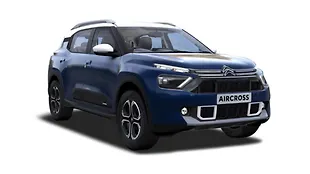
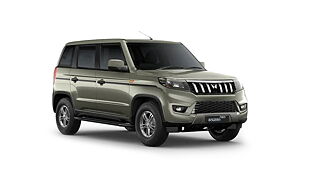

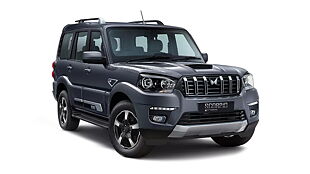


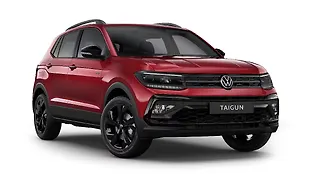

రంగులు
- హోమ్
- మహీంద్రా కార్లు
- స్కార్పియో [2014-2017]
- ఎస్4 ప్లస్ 1.99 ఇంటెల్లి-హైబ్రిడ్


